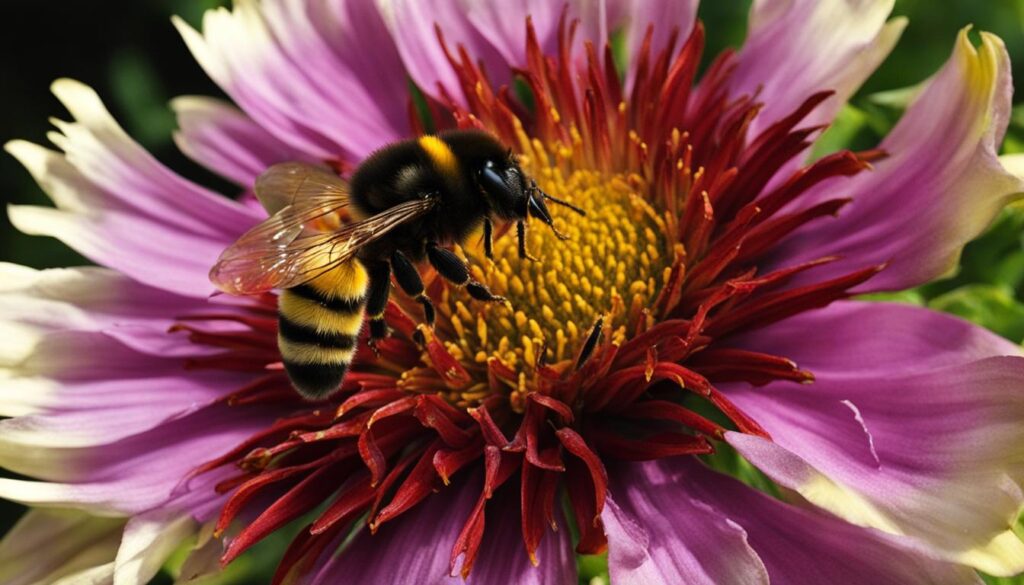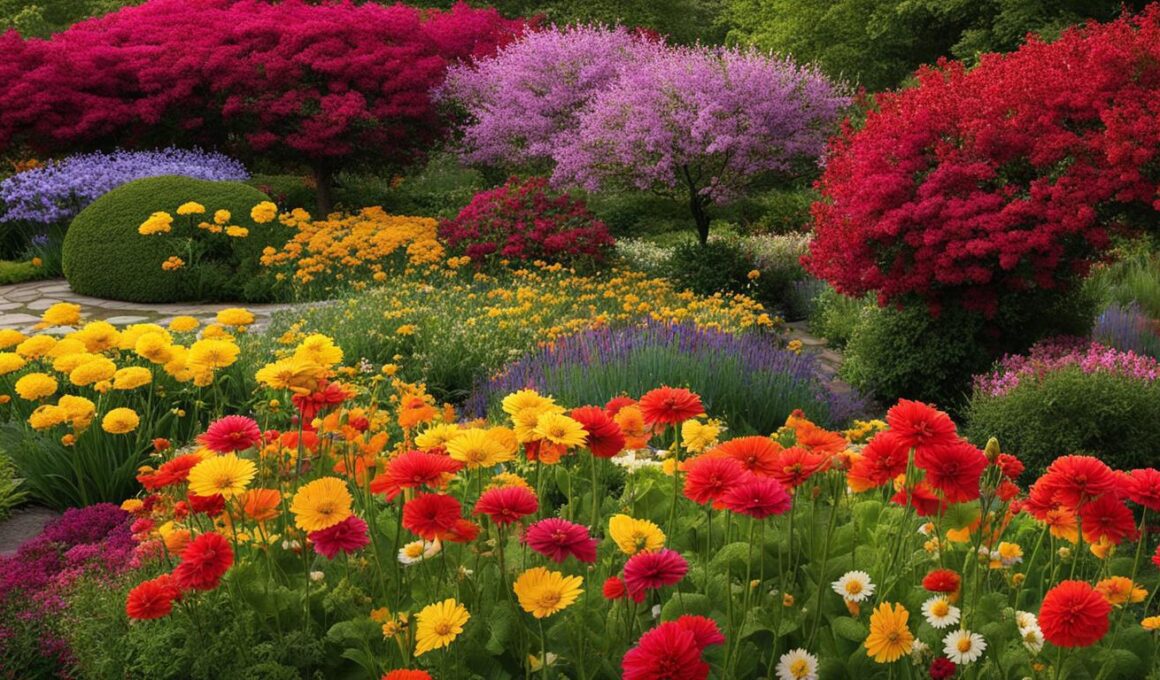If you have a beautiful garden but are hesitant to spend time outdoors due to bee allergies or insect phobia, you’ll be glad to know that there are flowers that don’t attract bees. While bees are essential pollinators, it’s still possible to create a peaceful outdoor space without worrying about unwanted visitors. By strategically planting flowers that bees find unattractive, you can enjoy the beauty of nature without the buzzing companions.
In this article, we will explore a list of flowers that don’t attract bees, allowing you to create a tranquil and bee-free garden. Whether you want to create a safe haven for yourself or simply prefer a peaceful environment, these flowers will help you achieve your goal. From geraniums to marigolds, red lilies to cardinal flowers, and tulips to snapdragons, we’ve got you covered.
By incorporating these bee-repellent flowers into your garden, you can create a serene outdoor space where you can relax, entertain guests, or simply enjoy the beauty of nature. Let’s dive in and explore the colorful world of flowers that don’t attract bees, and create a harmonious garden that suits your preferences and needs.
Flowers with Unattractive Colors for Bees
Bees are highly attracted to colors with shorter wavelengths, such as purple, violet, and blue. However, there are flowers that don’t attract bees due to their petal’s color, particularly those with shorter wavelengths like red. Geraniums, marigolds, and red lilies are examples of flowers with colors that bees find unattractive. These flowers are either ignored by bees because they appear black to their eyes or because they contain only a few nectars and can’t support the bee’s needs.
- Geraniums: With their vibrant red or pink petals, geraniums are not appealing to bees. While they may look visually stunning to us, bees perceive them as black due to their limited color vision.
- Marigolds: Marigolds come in various colors, but their bright orange and yellow hues are not preferred by bees. The saturated pigments of marigolds can appear black to bees, making them less attractive.
- Red Lilies: Despite their striking beauty, red lilies are often overlooked by bees. The deep red color registers as black to bees, decreasing their interest in these flowers.
By planting flowers with unattractive colors for bees like geraniums, marigolds, and red lilies, you can create a vibrant garden while minimizing the presence of bees. These flowers not only add visual appeal to your outdoor space but also provide a bee-free environment for those who may have allergies or insect phobia.
Flowers with Unpleasing Smells for Bees
Bees are very attentive to smell and can detect the scent of a flower even during flight. While some flowers like lavender and rosemary attract bees with their pleasing scents, there are others that repel them.
Mexican marigolds, chrysanthemums, cinnamon, geraniums, cucumber, and citronella are among the flowers that don’t attract bees due to their unpleasing smells.
Bees prefer flowers with irresistible and pleasing scents, which is why they are attracted to flowers like lavender and beebalm.

Creating a peaceful garden without attracting bees is possible by carefully selecting flowers with unpleasing smells.
- Mexican marigolds
- Chrysanthemums
- Cinnamon
- Geraniums
- Cucumber
- Citronella
Conclusion
Creating a bee-friendly garden is not only beneficial for the overall health and well-being of bees but also provides a peaceful outdoor space for individuals who are allergic to bee stings or have insect phobia. By selecting flowers that don’t attract bees, you can still enjoy the beauty of flowers without worrying about unwanted bee encounters.
When choosing flowers for your garden, consider factors such as color, scent, and the availability of nectar and pollen. Flowers like geraniums, marigolds, and red lilies are examples of beautiful blooms that bees find unattractive. These flowers provide a bee-free environment while adding vibrancy and charm to your outdoor space.
However, it’s important to remember that bees are essential pollinators and contribute to the ecosystem. To support their survival, consider planting other bee-friendly flowers in separate areas of your garden. This way, you can create a balance between a bee-free outdoor space and a nurturing environment for these valuable creatures.
Do Flowers That Close At Night Also Repel Bees?
Some nightclosing flowers like poppies and evening primroses do repel bees as they close up at night, preventing bees from accessing their nectar and pollen. However, other nightclosing flowers like jasmine and nicotiana attract bees with their strong scents, even after dark.









